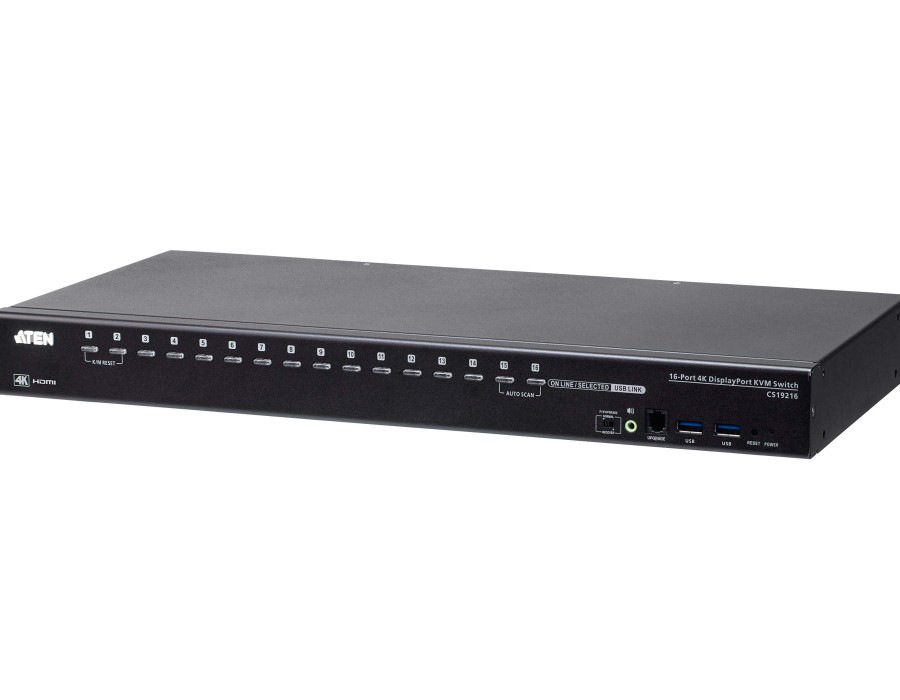In the realm of modern command centers and data-intensive operations, Rackmount Monitors with KVM Switches stand as technological marvels that bridge the gap between control and efficiency. These integrated solutions offer a seamless blend of display capabilities and centralized control, enhancing decision-making and operational agility. However, behind their sleek facade lies a challenge that often remains hidden: the intricacies of cable routing and connectivity. In this article, we delve into the challenges posed by cable management in Rackmount Monitors with KVM Switches and explore innovative solutions that pave the way for streamlined operations.
The Conundrum of Cable Chaos
Amidst the complex orchestration of military operations, the last thing commanders need is a maze of tangled cables. Rackmount Monitors with KVM Switches, while transformative in their capabilities, can inadvertently give rise to a cable management conundrum. The integration of multiple displays, switches, and peripheral devices introduces a plethora of cables that demand careful organization. Left unchecked, cable chaos can lead to inefficiency, increased downtime, and the risk of accidental disconnections.
Challenge 1: Space Optimization
In the world of military command centers and tactical deployments, space is a precious commodity. The challenge lies in accommodating the various cables necessary for the operation of Rackmount Monitors with KVM Switches while ensuring that they don't impede workflow or obstruct the workspace. Space optimization becomes crucial in maintaining an organized and functional environment.
Solution 1: Cable Management Systems
Effective cable management systems offer an elegant solution to the challenge of space optimization. These systems encompass cable trays, grommets, and clips that secure cables along designated pathways. By routing cables efficiently, these systems prevent tangling and tripping hazards, while also ensuring that valuable space is maximized. Furthermore, these systems enhance aesthetics by keeping cables out of sight, contributing to a clean and professional workspace.
Challenge 2: Flexibility and Accessibility
Military operations are dynamic, and the configuration of command centers must be equally adaptable. As operational requirements change, the need for flexible cable routing and accessibility becomes evident. Rackmount Monitors with KVM Switches must be equipped to accommodate new devices or peripherals without compromising the integrity of cable connections.
Solution 2: Modular Designs
Modular designs in Rackmount Monitors with KVM Switches offer a flexible approach to cable routing and accessibility. These designs allow for the addition or removal of components without extensive cable reconfiguration. Hot-swappable modules, connectors, and interfaces enable swift adjustments while maintaining cable integrity. By embracing modularity, military personnel can reconfigure their setups on-demand, adapting to evolving operational needs without the hassle of extensive cable management.
Challenge 3: Cable Labeling and Identification
In the labyrinth of cables that power Rackmount Monitors with KVM Switches, cable labeling and identification can often become an overlooked yet critical challenge. Accurate labeling is vital for swift troubleshooting, maintenance, and upgrades. The absence of proper labeling can lead to confusion, wasted time, and even costly mistakes.
Solution 3: Color Coding and Labeling Protocols
Implementing color coding and labeling protocols is a pragmatic solution to the challenge of cable identification. By assigning distinct colors or labels to different types of cables, military personnel can quickly identify and trace the path of specific cables. This not only expedites troubleshooting but also aids in the organization of cables during installation and upgrades. A comprehensive labeling system ensures that even in the midst of complexity, cable routing remains manageable.
Challenge 4: Minimizing Signal Interference
In mission-critical environments, signal interference can spell disaster. The proximity of numerous cables in Rackmount Monitors with KVM Switches increases the potential for electromagnetic interference (EMI) or radio frequency interference (RFI). Ensuring a clean signal path while avoiding crosstalk becomes a paramount challenge.
Solution 4: Shielding and Cable Separation
The implementation of shielding and cable separation techniques is a proactive strategy to mitigate signal interference. Shielded cables are designed to minimize electromagnetic emissions and protect against external interference. Additionally, maintaining a safe distance between high-power cables and sensitive data cables reduces the likelihood of signal degradation. By isolating different types of cables and using shielded options where necessary, military operations can safeguard the integrity of critical signals.
Challenge 5: Maintenance and Upgrades
As technology evolves, the need for equipment maintenance and upgrades is inevitable. The challenge arises when these activities require the manipulation of intricate cable configurations. Disruptions to operations during maintenance can be detrimental, necessitating solutions that minimize downtime.
Solution 5: Cable Management Planning
A well-thought-out cable management plan is indispensable for efficient maintenance and upgrades. This plan encompasses detailed documentation of cable connections, labeling, and organization. By referencing this plan, technicians can swiftly navigate through cable configurations, reducing the risk of errors and minimizing the time required for maintenance or upgrades. Additionally, investing in modular designs that allow for component replacements without extensive cable reconfiguration further streamlines these processes.
Conclusion: Navigating Complexity with Expertise
The complexity of cable routing and connectivity in Rackmount Monitors with KVM Switches is a challenge that demands strategic solutions. From space optimization to signal integrity, a multifaceted approach is necessary to tackle the intricacies of cable management. The solutions outlined here - cable management systems, modular designs, labeling protocols, shielding techniques, and comprehensive planning - collectively empower military personnel to navigate this complexity with expertise.
As technology continues to advance, the evolution of cable management will undoubtedly follow suit. Smart cable routing systems, automated cable management, and wireless connectivity innovations are on the horizon. The vision is a future where the synergy between technology and efficient cable management transforms military command centers into streamlined hubs of operational excellence. By addressing cable challenges today, military operations can unlock the full potential of Rackmount Monitors with KVM Switches while minimizing the complexities of tomorrow.





Comments